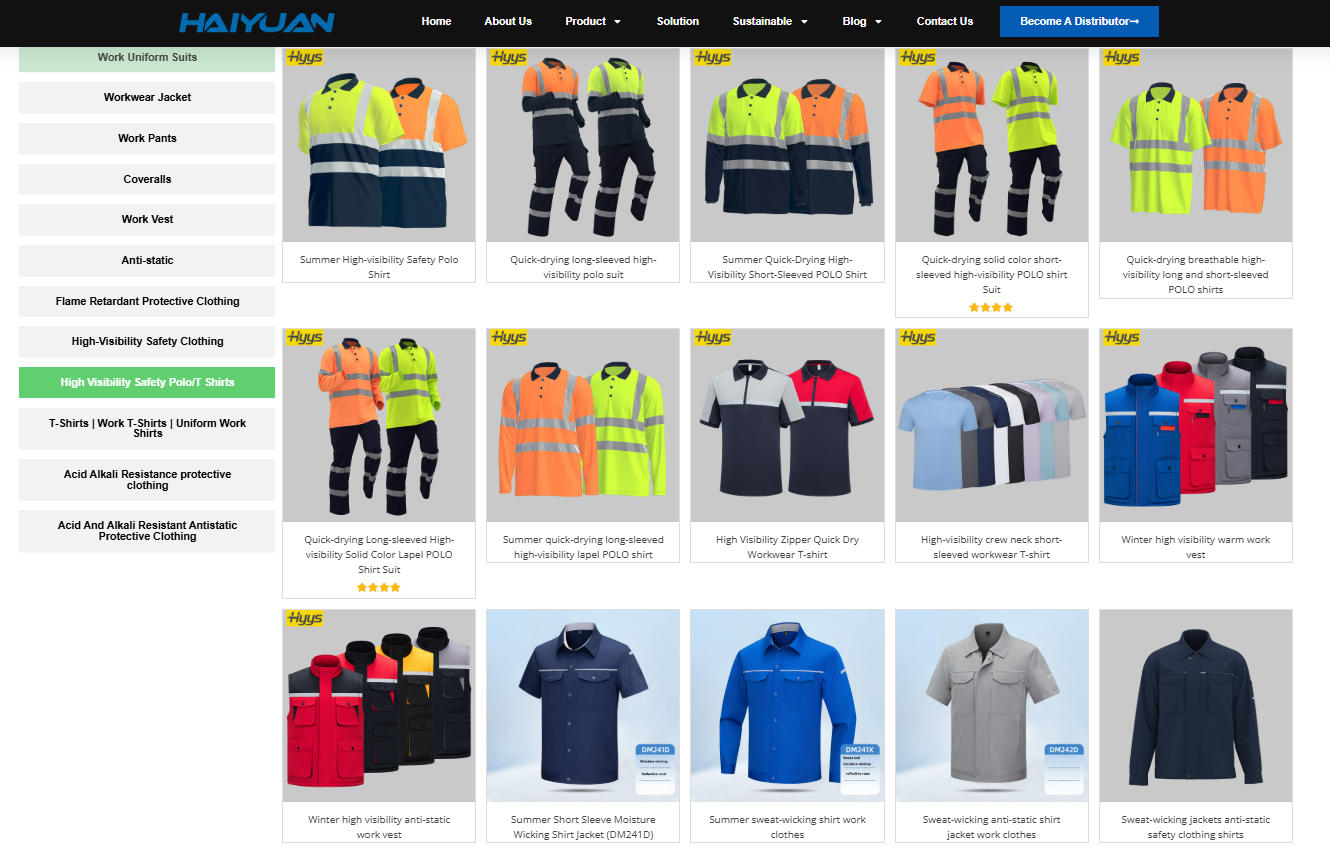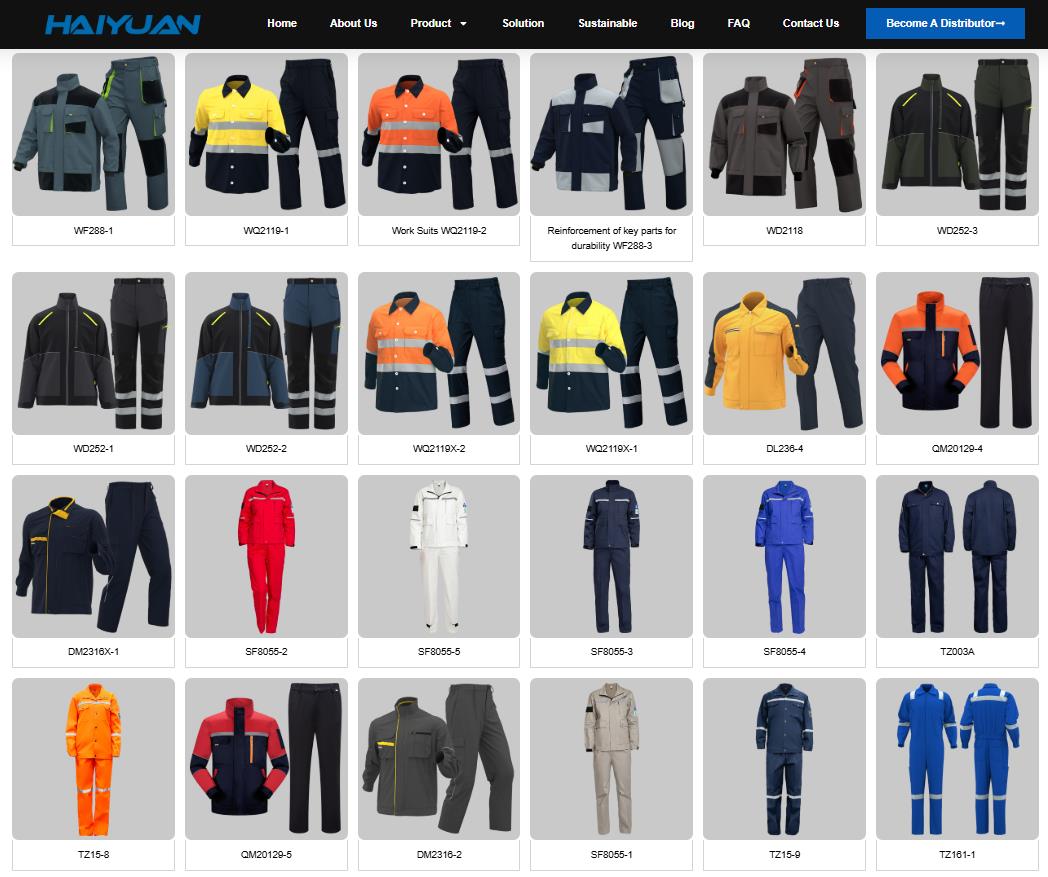For Sri Lankan businesses—from hotels and resorts in Colombo and Galle to manufacturing plants in Katunayake and tech firms in the Megapolis—professional uniforms are a key brand asset. Sourcing them from China offers access to a vast range of fabrics, competitive pricing, and specialized manufacturing capabilities that can be more efficient than local production for certain volumes and specifications.
Phase 1: Pre-Sourcing Strategy & Planning
1. Define Your Business Case:
-
Why Import from China? Sri Lanka has a strong apparel sector. Your reason should be clear:
-
Cost: For certain items and order volumes, Chinese manufacturing may offer a better price point.
-
Specialization: Access to specific technical fabrics (e.g., advanced FR treatments, specialized polymers) or complex manufacturing processes (detailed embroidery, specific dye techniques).
-
Volume and Scalability: Fulfilling a very large, one-time order efficiently.
-
All-in-One Package: Sourcing uniforms with integrated accessories or unique hardware.
-
2. Define Your Product Precisely:
-
Technical Package (Tech Pack): This is your blueprint. It must include:
-
Technical sketches with detailed views.
-
Graded size chart with measurements in centimeters.
-
Detailed fabric specification: e.g., “65% Polyester / 35% Cotton, 220GSM Pique” instead of just “poly-cotton”.
-
Pantone (PMS) codes for exact color matching.
-
Stitching and construction details.
-
Logo Artwork: Provide a high-resolution vector file (
.aior.eps) for clean reproduction. Specify the application method: embroidery (stitch count, thread type), printing (screen, DTG), or woven labels.
-
-
Samples: Always budget for and request pre-production samples. This is your chance to check fit, feel, and quality before the entire order is run.
3. Calculate the Total Landed Cost:
The unit price is misleading. You must calculate the cost to get the goods to your warehouse in Sri Lanka:
-
Unit Cost x Quantity
-
Cost of Samples & Shipping
-
International Freight (Sea freight to Colombo Port is most common)
-
Insurance
-
Sri Lankan Import Duties, VAT, and Other Taxes (See Section 3)
-
Customs Clearing Agent Fees
-
Local Transportation (from Colombo Port to your location)
-
Bank Charges for Telegraphic Transfer (TT)
Phase 2: Finding & Vetting Chinese Suppliers
1. Sourcing Channels:
-
B2B Platforms: Alibaba.com is the primary platform. Look for suppliers with “Gold Supplier,” “Trade Assurance,” and a strong transaction history. Made-in-China.com is another option.
-
Sourcing Agents: Highly recommended for first-time importers. An agent based in China can handle factory vetting, negotiation, quality control, and logistics coordination, often saving you more than their fee (typically 5-10%).
-
Trade Shows: The Canton Fair (China Import and Export Fair) is the ideal place to meet suppliers in person, feel fabric quality, and build relationships.

haiyuan-clothing-factory
2. Vetting Suppliers:
-
Communication: Assess their responsiveness and ability to understand your technical requirements.
-
Factory Audit: Request a virtual tour or recent photos/videos of their production facility.
-
Portfolio & References: Ask for examples of work they have done for other international clients, specifically for workwear/uniforms.
-
Get Multiple Quotes: Provide your detailed tech pack to at least 3-4 suppliers to compare pricing, MOQs, and payment terms fairly.
Phase 3: Navigating Sri Lankan Import Regulations & Logistics
This is the most critical phase for a Sri Lankan importer.
1. Importer Documentation:
-
Ensure your company is registered with the Sri Lanka Customs portal. You will need an Importer Code.
-
You must have a valid Business Registration Certificate from the Registrar of Companies.
-
A Tax Identification Number (TIN) from the Inland Revenue Department (IRD) is mandatory.
2. Understanding Customs, Duties, and Taxes:
-
HS Code: Work uniforms typically fall under HS Code 6205.20.00 or 6211.32.90. Confirm this with your clearing agent.
-
Customs Import Duty: Rates vary. Sri Lanka’s customs duty structure can be complex, with rates often ranging from 5% to 30% depending on the product type and fabric. You must check the latest Sri Lanka Customs tariff guide.
-
Ports and Airports Development Levy (PAL): A levy of 7.5% is applied on the CIF value (Cost, Insurance, Freight).
-
Value Added Tax (VAT): The standard rate of 18% is applied on the sum of the CIF value + Customs Duty + PAL + other applicable charges.
-
Other Taxes: A CESS tax may also apply on certain goods.
3. The Role of a Sri Lankan Customs Clearing Agent:
-
Hire a reliable clearing agent based in Colombo. They are indispensable. They will:
-
Classify your goods under the correct HS code.
-
Calculate all duties, PAL, and VAT accurately.
-
Prepare and submit the mandatory CUSDEC (Customs Declaration) electronically through the Sri Lanka Customs EDI system.
-
Liaise with customs officials on your behalf and handle the release of goods from the port.
-
4. Required Shipping Documents from Supplier:
Your Chinese supplier must provide you with:
-
Commercial Invoice (must be signed and stamped)
-
Packing List
-
Bill of Lading (for sea freight) or Air Waybill (for air freight)
-
Certificate of Origin (Typically a non-preferential CoO. Check if your goods qualify for preferential treatment under the ASEAN–China Free Trade Area (ACFTA) or other agreements).
5. Logistics: Shipping to Sri Lanka:
-
Incoterms: The most common and recommended term is FOB (Shanghai/Shenzhen/Ningbo). You appoint your own freight forwarder in Sri Lanka to handle the main sea freight and customs clearance, giving you more control and often better local rates.
-
CIF (Colombo) is simpler but gives the Chinese supplier control over the shipping, which can sometimes lead to higher overall costs.
-
Sea Freight: The standard and most cost-effective method. Shipments are consolidated in containers and arrive at the Port of Colombo.
Phase 4: Order Execution & Quality Assurance
1. Payment Terms:
-
Secure Terms are Crucial. Never pay 100% upfront.
-
Standard Practice: 30% deposit via T/T to confirm the order and cover material costs, 70% balance payment after production is complete and you have approved the pre-shipment inspection report, but before shipment.
-
Use Alibaba Trade Assurance: This escrow service protects your payment until you confirm satisfactory receipt of the goods.
2. Quality Control (QC):
-
Pre-Shipment Inspection (PSI): This is non-negotiable. Hire a third-party inspection company (e.g., SGS, Bureau Veritas, or your sourcing agent) to inspect the goods at the factory in China before they are packed and shipped. The inspection should verify:
-
Workmanship and stitching against your approved sample.
-
Correct fabric, color, and weight.
-
Accurate sizing.
-
Correct logo application and placement.
-
Quantity and packaging.
-
-
The small cost of an inspection prevents the massive cost and hassle of rejecting a container at the Port of Colombo.
Key Advantages & Challenges for Sri Lankan Importers
| Advantages | Challenges & Mitigation Strategies |
|---|---|
| Access to Specialization: Source technical fabrics and complex designs not available locally. | Complex Customs & Tax Calculation: Mitigate by hiring an experienced Sri Lankan customs clearing agent. |
| Potential Cost Savings: For certain items and volumes, the landed cost can be favorable. | Accurate Costing: Factor in ALL duties (PAL, VAT) into your initial landed cost calculation. |
| Scalability: Chinese factories can handle very large orders efficiently. | Lead Time: Production + sea freight can take 45-60 days. Plan inventory accordingly. |
| Quality Consistency: For well-vetted factories, output is very consistent. | Communication & Language Barrier: Use clear, simple English and diagrams. A sourcing agent can help. |
| Focus on Core Business: Outsourcing production allows you to focus on sales and marketing. | Logistics Reliance: Partner with a reputable freight forwarder with strong experience in China-Sri Lanka lanes. |
Conclusion: A Strategic Supply Chain Decision
Importing uniforms from China is a viable and strategic option for Sri Lankan businesses seeking quality, variety, and competitive pricing. Success hinges on:
-
Meticulous Planning: Creating a detailed tech pack and calculating the true landed cost.
-
Diligent Supplier Vetting: Using platforms and potentially agents to find reliable partners.
-
Expert Local Support: Engaging a trustworthy Sri Lankan customs agent and freight forwarder.
-
Risk Mitigation: Using secure payment terms and mandating a pre-shipment inspection.
By following this structured approach, Sri Lankan companies can build a resilient and efficient supply chain for their custom workwear needs, enhancing their brand’s professional image.




